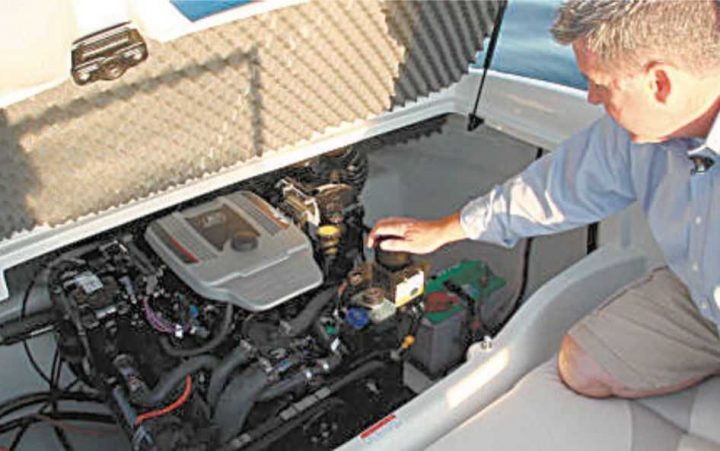With the days getting shorter, New England Boaters shift into the fall ritual of filling out winter storage contracts and service agreements with their favorite boatyard and hauler. With some advanced planning and preparation, it is the best time to set you and your boat up for a well protected winter and seamless launch in the spring.
Your boat’s systems, biminis/enclosures, storage tanks and surfaces all need consideration. The engine(s) should be inspected for loose belts, clamps and mounts. The fuel tank(s) should be topped off and a good stabilizer added. Inspect the engine’s exhaust for leaks and consider the last time the elbows and manifolds were replaced. Those with exhaust wrap, have you ever removed that insulation to see what is going on behind the scenes? In many cases this type of exhaust is custom, and rest assured, it will be the weekend you have 6 guests on board it decides to let go! Better to check it now.
Take the time to document the intervals you have performed routine maintenance. Oil and filters should be changed every 100 hours (general rule) or every season. Fall is best so the engine sleeps with fresh oil. Change the fuel filters in spring or fall. I recommend the fall so you know whether there is anything going on in that fuel tank. We all know that ethanol is a big problem for those with gas-powered boats and water the cause. Topping off the fuel tank and changing the fuel filters will help to eliminate condensation and allow you to check water separators for debris and water in both gas and diesel filters. It’s one less thing to tackle in the busy spring.
Remove your canvas, biminis and or enclosures for the winter where practical. The plastics are easily damaged by ice and snow and the frames and or supports are not designed to accommodate snow loads. These are expensive products and can last for many years when well cared for. The storage space should be clean, dry and warm if possible and out of direct sunlight to preserve color longer. Take the time to clean with mild detergents and rinse well with water. Apply a cleaner and preservative to the transparent plastics. For those needing repair and/or replacement CALL IN THE FALL! Waiting for spring to roll around to make these arrangements will ensure a long wait, increase the cost, and surely the frustration level for both you and your contractor.
COVER YOUR BOAT! Boats are not designed to have snow filling cockpits, bridges and decks. Melting snow finds its way in to every nook and cranny on a boat. Melting snow fills scuppers and drain hoses which then freeze over night expanding and breaking both. Once the scuppers and drains are compromised all the snow ends up in the bilge and beyond! That same melting snow that filled the nooks and crannies during the day then freezes at night creating new leaks and water damage for you to find in the spring. Hatches, deck hardware, stanchions and rails can begin to leak into the boat, or worse, into the core material in your decks and hulls.
READ YOUR INSURANCE POLICY! Ice and/or freezing damage are rarely covered by insurance and in many cases you find out “That’s not covered” and it’s too late. Learn about your coverage. Damage caused by freezing can be very costly.
There are many more annual routine maintenance projects that are not mentioned and should be addressed! Take the time to sit down with your boatyard manager to discuss your boat’s winter needs. He is happy to impart years of wisdom while including anecdotal stories of pitfalls and best practices of maintaining your boat. It is always more costly to repair damage to your boat then it is to maintain your boat properly. Additionally, you’ll save precious free time while maintaining the resale value of your favorite depreciable asset.
By Chris Ruhling,
GM, Brewer Greenwich Bay Marina
[easy-social-share]










